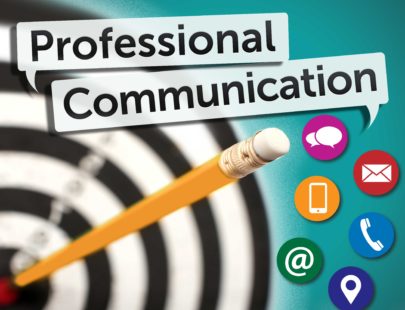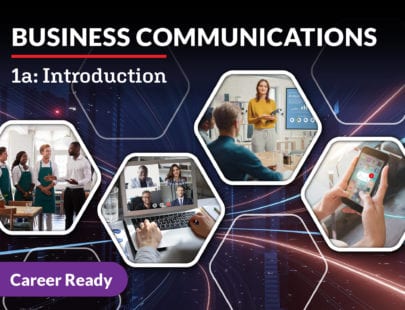
Public Speaking 1b: Finding Your Voice
Ready to level up your speaking skills? This course builds on what you learned in Public Speaking 1a and dives into the performance techniques that turn good speakers into unforgettable ones. You’ll explore how to use your voice, posture, movement, and visuals to grab attention and keep it. From class projects to online presentations, you’ll learn what works in front of an audience – and what doesn’t. With tips from great speakers, fun, and practical activities, and lots of opportunities to practice, you’ll feel more prepared and confident when it’s time to speak. Whether you dream of being a politician, influencer, polished motivational speaker – or just want to feel better prepared when you take the stage – this course gives you the tools to stand out and shine!
Units at a Glance
Unit 1: Blueprint for a Brilliant Speech
Strong presentations don’t just start with a bang—they flow smoothly from beginning to end. Whether your goal is to inform, persuade, or do anything in between, a clear structure helps your audience stay engaged and remember your message. In this unit, you’ll learn how to craft attention-grabbing introductions, organize the body of your speech so that it’s easy to follow, and deliver a conclusion that leaves a lasting impression. You’ll also discover how strategies like repetition, preview, and transitions help tie everything together to make your speech sound natural and complete.
What will you learn in this unit?
- Create an engaging introduction that captures attention, builds credibility, and previews your main points
- Organize ideas and supporting materials clearly in the body of a speech using logical structures
- Apply internal organizational strategies to strengthen clarity, flow, and audience engagement
- Construct a memorable conclusion that reinforces your central ideas and leaves a strong final impression
- Synthesize all the components of a speech into a complete, cohesive presentation
Unit 2: From Paper to Podium
Have you ever had something important to say but been unsure of how to say it? Words have power, but writing for the ear differs from writing for the eye. When you’re writing a speech, every word counts. In this unit, you’ll master the art of using figurative language, learn how to connect with an audience through your words, and explore the differences between writing for readers and writing for listeners. From incorporating sources to organizing your ideas into a full-sentence outline, this unit will take you confidently from paper to podium, ready to inspire.
What will you learn in this unit?
- Differentiate between the features of written and spoken language to design a speech that sounds natural and audience-friendly
- Adjust language, tone, and detail to suit the knowledge, expectations, and values of a specific audience
- Apply rhetorical devices and figurative language techniques to strengthen emotional and persuasive appeal
- Synthesize ideas from credible sources to support and expand on your message
- Construct a full-sentence outline to organize a speech effectively and support smooth delivery
Unit 3: Using Your Voice
Now that you’ve carefully crafted your speech to resonate with the audience, it’s time to focus on delivery. This unit explores vocal delivery, discussing techniques to elevate your message and capture your audience’s attention. You’ll learn how to use your voice to project confidence and present with clarity in any speaking situation. From mastering vocal variety and pausing for effect to warming up your voice like a pro, this unit teaches you how to transform your written words into a powerful, engaging presentation.
What will you learn in this unit?
- Analyze the role of vocal techniques such as pitch, pace, volume, and inflection in delivering a message with clarity and emphasis
- Compare and contrast four common speech delivery methods and determine which method is the most appropriate for a given speaking situation
- Apply strategies to manage nervousness and deliver a confident, well-structured speech using storytelling and effective transitions
- Practice and refine your speech with professional vocal delivery techniques and warm-up routines employed by experienced public speakers
Unit 4: Speak Without Saying a Word
Before you even say anything, your body is already sending a message. Are you confident, nervous, bored, or excited? From your posture to your facial expressions, the way you present yourself can influence how your audience understands and responds to your speech. In this unit, you’ll learn how to use nonverbal communication to reinforce your message. Learning how to use gestures and facial expressions with purpose can take your communication skills to the next level whether you’re presenting to a crowd or having a conversation with a small group of people.
What will you learn in this unit?
- Explain the role of nonverbal communication and describe how it influences an audience’s perception of a speaker
- Demonstrate effective movement by using physical space to organize ideas and enhance the flow of a speech
- Use facial expressions and eye contact to create emotional connection, build credibility, and reflect your message with authenticity
- Rehearse and refine your delivery by applying nonverbal communication techniques
Unit 5: Visuals That Speak Volumes
A strong speech doesn’t rely on words alone. Images, charts, videos, and props can bring your message to life while helping your audience understand and remember what you say. In this unit, you’ll explore how visual tools work, how to choose the right one for your speech, and how to design them clearly and effectively. You’ll also learn how to present visuals with confidence, integrate them smoothly into your delivery, and avoid common mistakes. This unit will help you master the art of visual storytelling, from designing slides to interpreting data.
What will you learn in this unit?
- Explain the role of visual aids in enhancing clarity, audience engagement, and message retention
- Differentiate types of visual aids and select the most appropriate one based on audience, purpose, and tone
- Interpret and analyze data visualizations and visual literacy concepts to support effective message delivery
- Apply design principles to create and deliver polished, audience-friendly visual aids
Unit 6: Sharpening Your Skills
Every great moment on stage starts long before the spotlight hits. It begins with the run-throughs, the rewrites, the nerves, and the breakthroughs. Do you want to speak calmly and with confidence even when your heart is racing? Are you ready to level up your delivery and connect more deeply with your audience? This unit is your backstage pass to becoming the kind of speaker people remember. From rehearsing with intention to learning how to give and receive feedback, you’ll sharpen your voice, strengthen your presence, and learn how to speak with greater power.
What will you learn in this unit?
- Apply rehearsal strategies to improve public speaking performance
- Deliver and apply constructive feedback from multiple sources to refine content and delivery
- Evaluate different speaking and listening styles to improve presentation effectiveness
- Demonstrate composure and adaptability during unexpected speaking situations by using improvisation techniques and performance-based recovery strategies
Unit 7: Digital Speaking Opportunities
From live streams to podcasts, digital platforms have expanded how—and where—we speak. In this unit, you’ll explore the different types of online presentations and platforms used by modern speakers, from Zoom to TikTok and Substack. You’ll learn how to engage digital audiences using interactive tools, prepare for virtual delivery, and troubleshoot common tech issues. You’ll also experiment with audio storytelling and practice giving a speech in a digital format. By the end of this unit, you’ll be ready to connect with audiences in any online environment.
What will you learn in this unit?
- Describe the major types of digital speaking opportunities and how they differ
- Evaluate different digital platforms based on purpose, features, and audience
- Apply strategies to engage online audiences using interactive tools such as polls, quizzes, and Q&A
- Demonstrate effective vocal delivery and storytelling techniques in an audio-only format
- Create an online presentation that demonstrates preparation, audience awareness, and use of digital tools
Unit 8: Giving a Group Presentation
Public speaking doesn’t always happen solo. In this final unit, you’ll explore how to succeed as part of a team. You’ll learn what makes group presentations unique, how group dynamics and communication styles affect collaboration, and what strategies help teams plan and present effectively. From choosing roles to using shared tools, you’ll discover how to deliver presentations that combine the strengths of multiple voices. Whether you love group work or dread it, this unit will help you become a more confident, effective team communicator.
What will you learn in this unit?
- Describe the characteristics of team-based and discussion-based presentations
- Analyze the roles, communication styles, and decision-making strategies that shape group dynamics
- Apply strategies for preparing a collaborative group presentation using shared tools and clear communication
- Evaluate listening, conflict management, and decision-making approaches that contribute to effective group participation
Required Materials
Physical
- Audio recording device
- Video recording device
Software
- Art supplies
- Google Slides (requires login)
- Google Workspace (requires login)
- Graphic design software
- Prezi (requires login)
- Spreadsheet software
Other
- Helpers (3)
Optional
- Presentation software
- Word processing software



